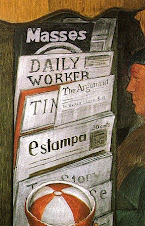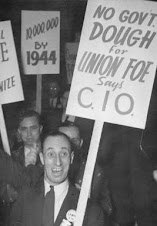A revolutionary youth’s perspective
By Caleb T. MaupinDuring his speech at the Republican National Convention, Vice Presidential candidate Paul Ryan at one point referred to the Obama administration as “central planners.” In doing so, he insinuated that President Obama was implementing economic policies similar to those of the Soviet Union, People’s Korea, Cuba and other countries engaged in socialist construction.
This accusation is, of course, outrageous. Obama has in no way altered the capitalist economic setup of the United States. The banks, industries and media of the U.S. economy remain under private, for-profit ownership.
Even health care, which Obama campaigned for on a reform platform and addressed in the Affordable Care Act, remains squarely in the hands of insurance companies, pharmaceutical cartels and for-profit hospital corporations.
Ryan’s accusation is also based on a false premise, namely, that “central planning” as implemented in the USSR and other socialist countries rendered negative results.
Central planning enabled USSR to defeat Nazis
The Soviet Union, which inherited a huge, underdeveloped, agrarian society after the 1917 revolution, was the first country to implement central planning. The Soviet Union had socialist goals, and the “commanding heights” of the economy were held under state ownership and control. In 1928, the Soviet Union launched the first of its five-year plans.
Unlike in capitalism, where the profit motive guides management decisions, these five-year plans involved labor unions, Communist Party leaders, technicians and workers’ councils, who came together to rationally plan economic activity.
Maurice Dobb, an economics lecturer at the University of Cambridge, extensively documented the results of the five-year plans in his work entitled “Soviet Economic Development Since 1917.” (International Publishers, 1948)
He showed that by 1938, having built the world’s largest hydroelectrical power plant at the Dnieper dam, the amount of electrical power in the Soviet Union was seven times what it had been 10 years earlier. Coal production had also multiplied by three and a half times during that period.
In 1938, the Soviet Union was producing more tractors than any other country on earth. The Soviet Union also led the world in locomotive production.
In capitalist countries, huge increases in production mean more profits for capitalists. But this huge industrial expansion rendered great results for the USSR’s people. During this period 20 new tramway systems were built in Soviet cities, along with 80 new bus systems. The number of hospital beds per capita in rural areas doubled as millions gained access to medical care for the first time in their lives.
Central planning in the USSR led to the creation of thousands of new high schools, trade schools and universities that provided free education. Soviet industry, along with enormous human sacrifice, enabled the USSR to defeat Nazi Germany in World War II. The USSR survived for another 45 years, trying to recover from that horrendous war, while keeping up with a U.S. arms race that threatened it with nuclear annihilation, before imperialism succeeded in pulling down the planned economy.
Tremendous gains in Cuba, north Korea
Cuba stands as a shining example of the superiority of central planning.
Immediately after the 1959 revolution, the Cuban government mobilized a mass campaign against illiteracy. By 1962, even before Cuba had nationalized all the vital industries of the country, which had largely been owned by U.S. capitalists, illiteracy had been abolished.
Jonathon Kozol, the world-famous educator and activist, wrote a glowing book entitled “Children of the Revolution” that documents the amazing results of Cuba’s centrally planned educational system.
Cuba’s centrally planned health care system provides Cubans with the highest life expectancy in Latin America. They also have a lower infant mortality rate than in the United States. (CIA World Factbook)
In addition to providing for the health care needs of its own people, Cuba also exports more medical aid around the world than any other country. Cuba also sends many teachers abroad as part of a world literacy program.
During the Korean War, the U.S. killed millions of Koreans and destroyed every building above one story in the north. With some Soviet aid, the north Korean government rebuilt the country by implementing central planning. Korea tripled its gross domestic product from 1953 to 1956. Such rapid economic recovery astounded world economists. (“Korea: Division, Reunification, and U.S. Foreign Policy” by Martin Hart-Landsberg, Monthly Review Press, 1998)
During the “arduous march” period in the mid-1990s, there was great suffering in People’s Korea due to flooding and the loss of trade with the former Soviet Union. But even during this period the socialist government made sure no person was ever homeless.
In contrast, the U.S. calls itself the richest country in the world, yet it has millions of homeless people, something People’s Korea never had, even when drought followed by floods brought widespread crop failure. (“North Korea, Another Country” by Dr. Bruce Cummings, New Press, 2003)
If Obama were indeed implementing “central planning” in the U.S., as the right-wing contends, things would undoubtedly have improved for working people here.
To create a planned economy, capitalism must be replaced by socialism. The result would include full employment for all, with health care and education available at no cost. The ultra-rich owners of the means of production — who are much fewer even than the 1% — would be overthrown, and the 99% would hold all economic and political power.
Paul Ryan is greatly mistaken in his accusations. Change of this kind has never come about as the result of an election, especially an election of a party — the Democratic Party — that itself upholds and defends capitalism. It always requires a revolution.










































No comments:
Post a Comment